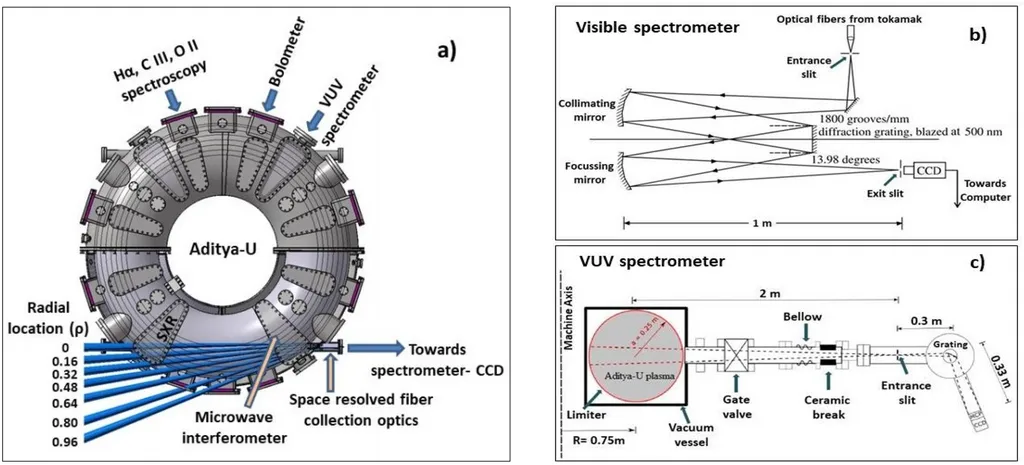In the quest for clean, sustainable energy, scientists are constantly pushing the boundaries of what’s possible. Recent research published in the journal *Nuclear Fusion* (translated from the Latin as “Nuclear Fusion”) offers a glimpse into the future of magnetic confinement fusion, a technology that could revolutionize the energy sector. The study, led by S.L. Newton of the United Kingdom Atomic Energy Authority at the Culham Campus, explores the use of impurities to control power loading in a spherical tokamak power plant geometry.
The research focuses on the ability of seeded argon and neon impurities to effectively manage divertor power loading. The divertor, a crucial component in tokamak reactors, helps to exhaust waste heat and particles from the fusion process. However, managing the power loading on the divertor is a significant challenge. “The impurity can significantly impact fusion performance if it travels upstream to the main confined plasma,” explains Newton. “So, we need to find a way to keep the impurity well localized in the divertor.”
The study uses SOLPS-ITER simulations to investigate this phenomenon in a power-plant-class spherical tokamak geometry. The researchers found that argon is highly effective in reducing target power loads and remains well localized as the outer leg of the divertor detaches. “Argon has a high radiation efficiency,” says Newton, “and it can improve compression and enrichment in the inner leg if seeded there directly.”
In contrast, neon was found to be less suitable for use at this scale. While it can reduce target power loads, its low radiation efficiency and high impurity concentration on the last closed flux surface make it less desirable than argon.
The implications of this research for the energy sector are significant. As the world seeks to transition to cleaner energy sources, fusion power offers a promising solution. However, the commercial viability of fusion power depends on our ability to overcome technical challenges like divertor power loading. This study provides valuable insights into how we might do that, bringing us one step closer to a future powered by clean, sustainable fusion energy.
The research also highlights the importance of continued investment in fusion research. As Newton notes, “There’s still much we don’t understand about the behavior of impurities in fusion plasmas. But with further research, we can overcome these challenges and unlock the full potential of fusion power.”
In the meantime, the energy sector can look to this research as a beacon of hope. The journey to commercial fusion power is long and fraught with challenges, but with each new discovery, we come one step closer to a future powered by clean, sustainable energy.

